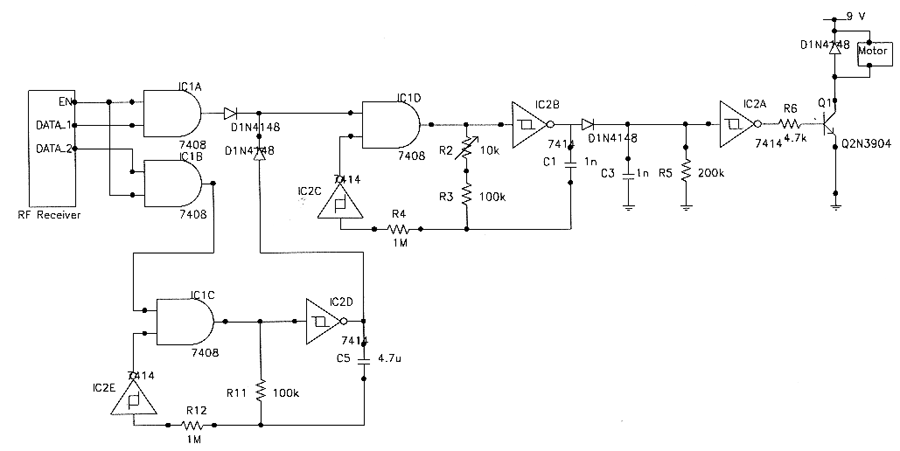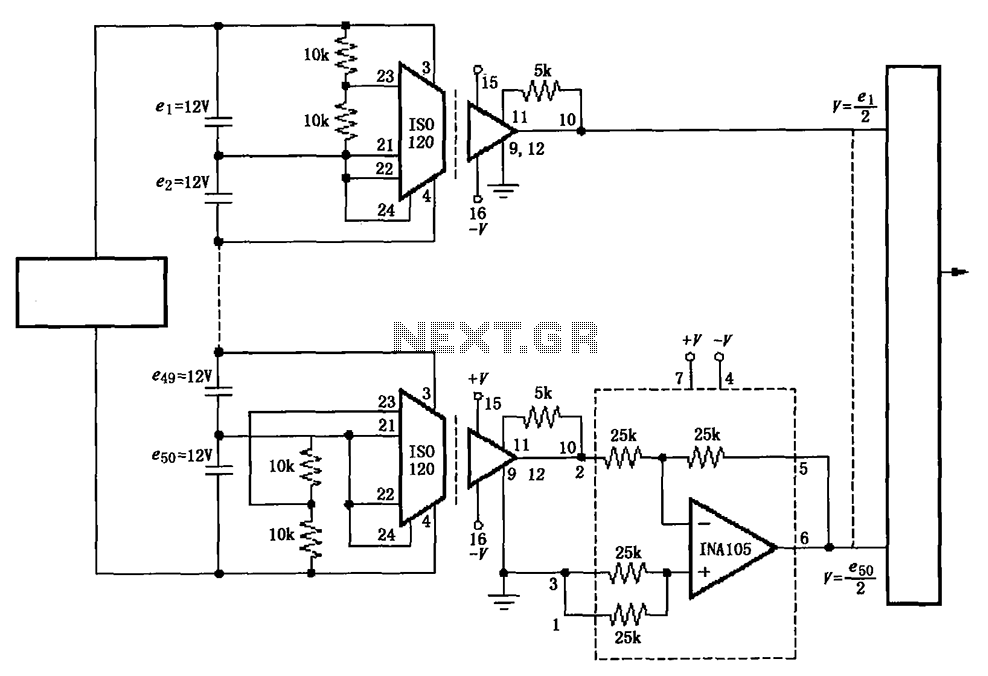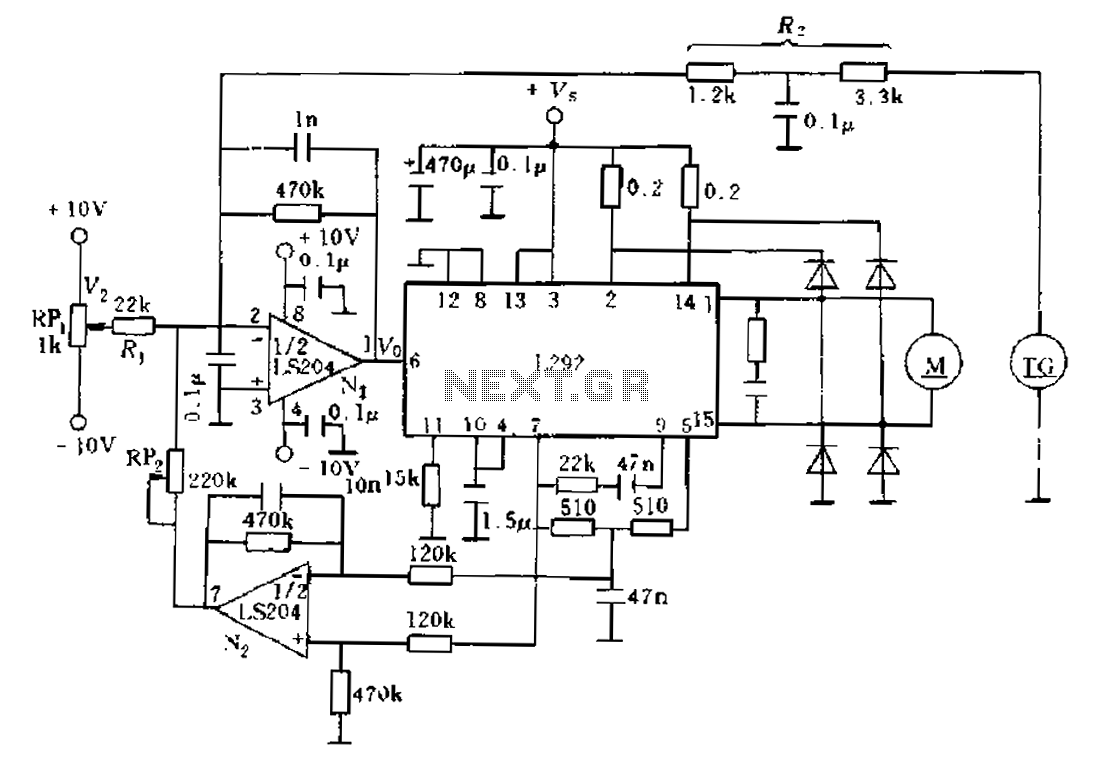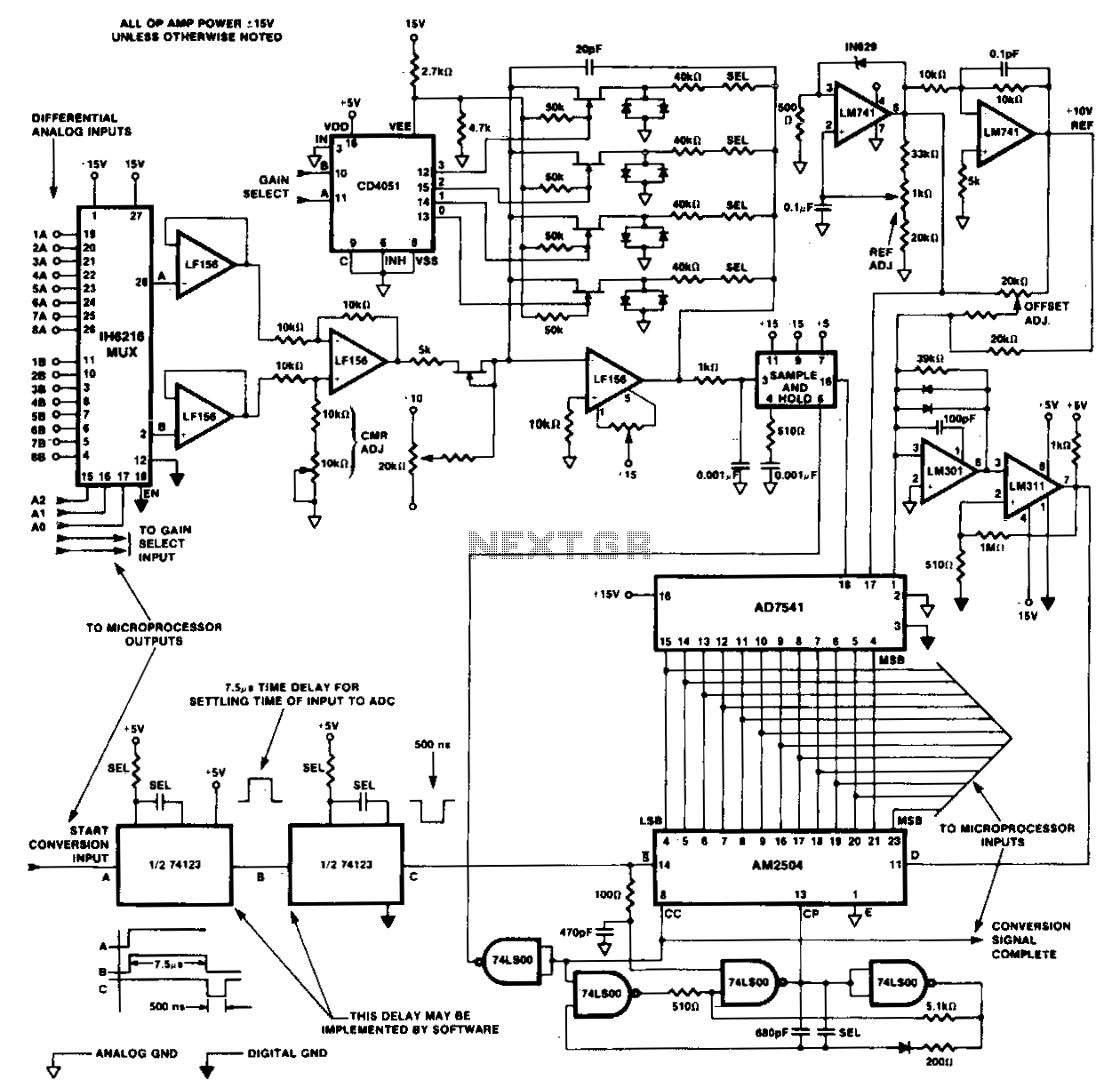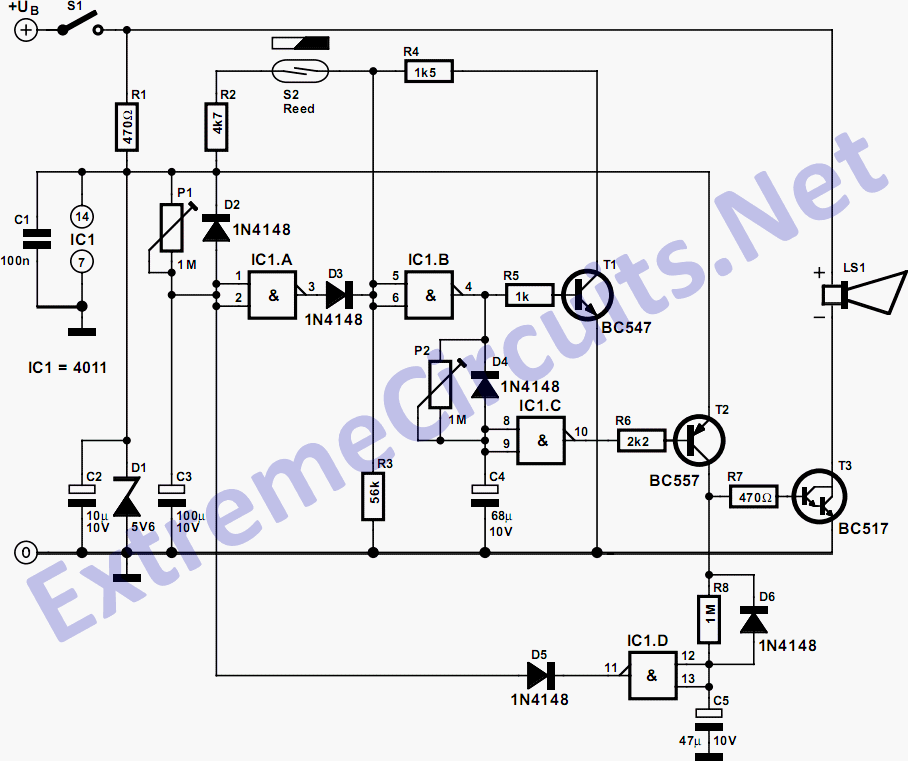
Synchronous System
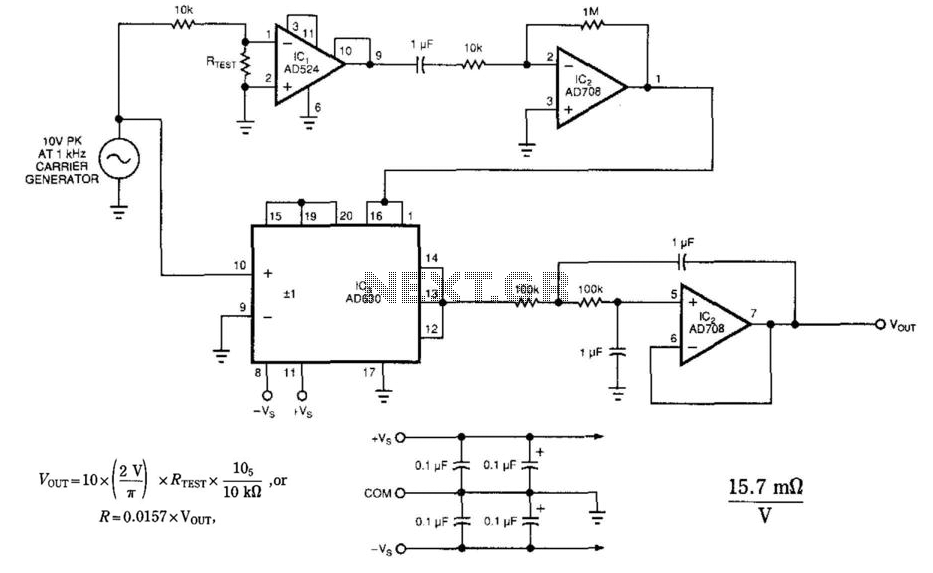
The circuit employs a synchronous detection method to measure low-level resistances. Other low-resistance measuring circuits may introduce excessively large currents into the system under test. This circuit synchronously demodulates the voltage drop across the system under test, allowing the use of extremely low currents during resistance measurement. A 10-V peak, 1-kHz carrier generator injects a 1-mA reference current into the unknown resistor, denoted as iTEST. Instrument amplifier IC1 and precision operational amplifier IC2A amplify the voltage across iTEST with a gain of 100,000. Synchronous detector IC3 demodulates this voltage, and operational amplifier IC2B functions as a low-pass filter for the demodulated voltage. The low-pass filtering attenuates all uncorrected disturbances, such as noise, drift, or offsets, while allowing a DC voltage proportional to the unknown resistance to pass through.
The circuit is designed to provide precise measurements of low resistances while minimizing the impact on the system under test. The use of a synchronous detection scheme is critical in this application, as it enables the circuit to reject common-mode noise and interference, which are prevalent in low-level measurements.
The 10-V peak, 1-kHz carrier signal generated serves as a reference for the synchronous detection process. By injecting a controlled 1-mA reference current into the unknown resistor, the circuit ensures that the voltage drop across the resistor can be accurately measured without introducing significant error or disturbance.
The amplification stage, consisting of instrument amplifier IC1 and precision op amp IC2A, is crucial for enhancing the small voltage signal generated across the resistor. With a gain of 100,000, this stage significantly boosts the signal, making it suitable for further processing. The choice of operational amplifiers is essential, as they must possess low noise characteristics and high input impedance to avoid loading the circuit under test.
The synchronous detector IC3 plays a vital role in demodulating the amplified voltage signal. This component extracts the desired DC component from the AC signal, effectively isolating the information related to the resistance measurement. Following this, operational amplifier IC2B acts as a low-pass filter, which is designed to suppress high-frequency noise and other unwanted signal components. By allowing only the DC voltage, which is directly proportional to the resistance, to pass through, the filtering stage enhances the accuracy and reliability of the measurement.
Overall, this circuit design exemplifies a sophisticated approach to low-resistance measurement, combining advanced signal processing techniques with careful component selection to achieve high precision while minimizing the influence of external factors. The circuit uses a synchronous-detection scheme to measure low-level resistances. Other low-resis-tance-measuring circui ts sometimes inject unacceptable large currents into the system-under-test. This circuit synchronously demodulates the voltage drop across the system-under-test and can hence use* extremely low currents while measuring resistance. The 10-V (pk), 1-kHz carrier generator injects a 1-mA reference current into unknown resistor, iTEST.
Instrument amplifier IC1 and precision op amp IC2A amplify the voltage across iTEST by a gain of 100 000. Synchronous detector IC3 demodulates this voltage, then op amp IC2B acts a low-pass filter on the demodulated voltage.
The low-pass filtering will attenuate all uncorrected disturbances (such as noise, drift, or offsets), while passing a dc voltage that is proportional to the unknown resistance. 🔗 External reference
The circuit is designed to provide precise measurements of low resistances while minimizing the impact on the system under test. The use of a synchronous detection scheme is critical in this application, as it enables the circuit to reject common-mode noise and interference, which are prevalent in low-level measurements.
The 10-V peak, 1-kHz carrier signal generated serves as a reference for the synchronous detection process. By injecting a controlled 1-mA reference current into the unknown resistor, the circuit ensures that the voltage drop across the resistor can be accurately measured without introducing significant error or disturbance.
The amplification stage, consisting of instrument amplifier IC1 and precision op amp IC2A, is crucial for enhancing the small voltage signal generated across the resistor. With a gain of 100,000, this stage significantly boosts the signal, making it suitable for further processing. The choice of operational amplifiers is essential, as they must possess low noise characteristics and high input impedance to avoid loading the circuit under test.
The synchronous detector IC3 plays a vital role in demodulating the amplified voltage signal. This component extracts the desired DC component from the AC signal, effectively isolating the information related to the resistance measurement. Following this, operational amplifier IC2B acts as a low-pass filter, which is designed to suppress high-frequency noise and other unwanted signal components. By allowing only the DC voltage, which is directly proportional to the resistance, to pass through, the filtering stage enhances the accuracy and reliability of the measurement.
Overall, this circuit design exemplifies a sophisticated approach to low-resistance measurement, combining advanced signal processing techniques with careful component selection to achieve high precision while minimizing the influence of external factors. The circuit uses a synchronous-detection scheme to measure low-level resistances. Other low-resis-tance-measuring circui ts sometimes inject unacceptable large currents into the system-under-test. This circuit synchronously demodulates the voltage drop across the system-under-test and can hence use* extremely low currents while measuring resistance. The 10-V (pk), 1-kHz carrier generator injects a 1-mA reference current into unknown resistor, iTEST.
Instrument amplifier IC1 and precision op amp IC2A amplify the voltage across iTEST by a gain of 100 000. Synchronous detector IC3 demodulates this voltage, then op amp IC2B acts a low-pass filter on the demodulated voltage.
The low-pass filtering will attenuate all uncorrected disturbances (such as noise, drift, or offsets), while passing a dc voltage that is proportional to the unknown resistance. 🔗 External reference
